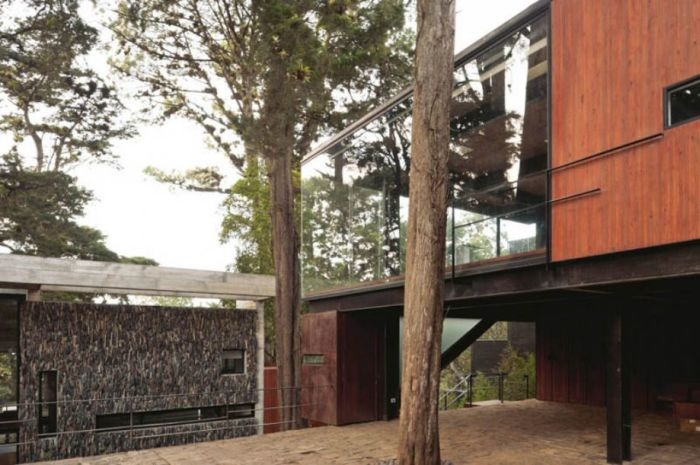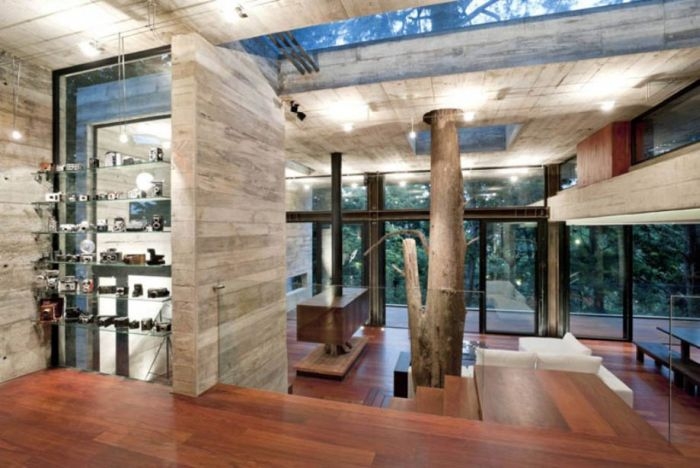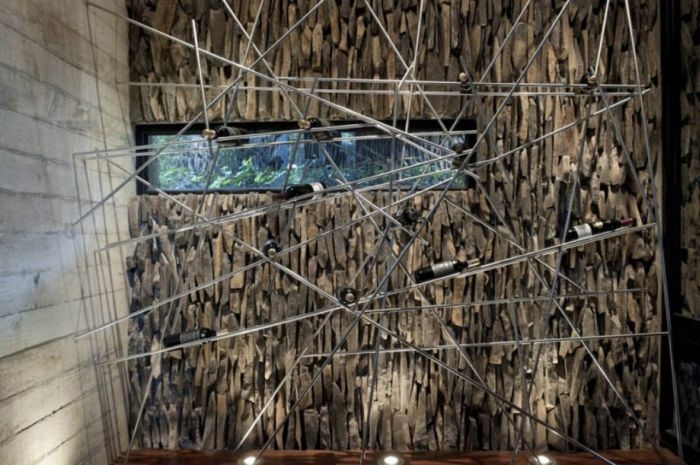 A few years ago in japan, members of the hokkaido industrial research institute started carving thousands of very precise grooves into nearby roads. the slightly loopy brainwave belonged to a mr. shinoda, a guy who accidentally cut a road in several places with a digger and then later drove over the damage in his car. He realized that with some planning and time to kill he could create rows of grooves which, when driven over at a certain speed, would ‘play a tune’.
A few years ago in japan, members of the hokkaido industrial research institute started carving thousands of very precise grooves into nearby roads. the slightly loopy brainwave belonged to a mr. shinoda, a guy who accidentally cut a road in several places with a digger and then later drove over the damage in his car. He realized that with some planning and time to kill he could create rows of grooves which, when driven over at a certain speed, would ‘play a tune’.
5. Musical Road: plays music as you drive over

The results, the ‘melody road’, can be seen above and the grooves are between 6 and 12mm apart: the narrower the interval, the higher the pitch. these stretches of road, each playing a different tune, can currently be found in 3 places in japan – hokkaido, wakayama and gunma – with the optimum musical speed being a depressingly slow 28mph. Don’t expect a virtual orchestra – from what I’ve heard, it’s not exactly beautiful music, but it’s unique and it’s mental. a winning combination. Until they create roads which can sing, you can either listen to a recording of one the ‘tunes’ here or watch the video below for an example.
4. LEGO Harpsichord
Created and built by Henry Lim, with the exception of the wire strings, the LEGO Harpsichord is entirely constructed out of LEGO parts–the keyboard, jacks, jack rack, jack rail, plectra, soundboard, bridge, hitch pins, tuning pins, wrestplank, nut, case, legs, lid, lid stick, and music stand are all built out of interlocking LEGO plastic bricks and related pieces.
With a 61 note range, the instruments size is 6 x 3 ft. weighing approximately 150 lbs., and built with an estimated 100,000 LEGO pieces!
3. Nano Guitar: world’s smallest guitar
The world’s smallest guitar is 10 micrometers long — about the size of a single cell — with six strings each about 50 nanometers, or 100 atoms, wide. Made by Cornell University researchers from crystalline silicon, it demonstrates a new technology for a new generation of electromechanical devices.
The guitar has six strings, each string about 50 nanometers wide, the width of about 100 atoms. If plucked — by an atomic force microscope, for example — the strings would resonate, but at inaudible frequencies. The entire structure is about 10 micrometers long, about the size of a single human blood cell. A nanometer is one-billionth of a meter. For comparison, the diameter of a human hair is about 200 micrometers, or 200,000 nanometers.
2. Sea Organ: Olayed by the sea
The musical Sea Organ (morske orgulje) is located on the shores of Zadar, Croatia, and is the world’s first musical pipe organs that is played by the sea. Simple and elegant steps, carved in white stone, were built on the quayside. Underneath, there are 35 musically tuned tubes with whistle openings on the sidewalk. The movement of the sea pushes air through, and – depending on the size and velocity of the wave – musical chords are played. The waves create random harmonic sounds.
This masterpiece of acoustics and architecture was created by expert Dalmatian stone carvers and architect Nikola Basic in 2005, who recently received the European Prize for Urban Public Space for this project. Many tourists come to listen to this unique aerophone, and enjoy unforgettable sunsets with a view of nearby islands. Famed director Alfred Hitchcock said that the most beautiful sunset in the world can be seen from precisely this spot on the Zadar quay. That was how he described it after his visit to Zadar, a visit he remembered throughout his life by the meeting of the sinking sun and the sea.
1. Atlantic City Convention Hall Organ: World’s largest and loudest musical instrument
The Convention Hall Auditorium Organ is the pipe organ in the Main Auditorium of the Boardwalk Hall in Atlantic City, New Jersey, built by the Midmer-Losh Organ Company. The great hall itself is also part of the world’s largest pipe organ and was formerly known as the Atlantic City Convention Hall, which can seat 41,000 people in the main auditorium.
The massive organ has 33,112 pipes in 455 ranks, including a full-length 64 foot Diaphone Profunda, ten 32 foot ranks, and manual and pedal reeds that are under 100 inches of wind pressure, while most organs never exceed 10 inches of pressure. In total, there are 4 stops on 100 inches of wind pressure, and there are 10 stops on 50 inches of wind pressure, ear bursting stuff, but all in order to fill the giant room with sound. The electric blowers that power the organ approach 1,000 horsepower, the kind of power needed to fill a hall larger than 15 million cubic feet. A tour of the entire organ takes 4 1/2 hours.














































































